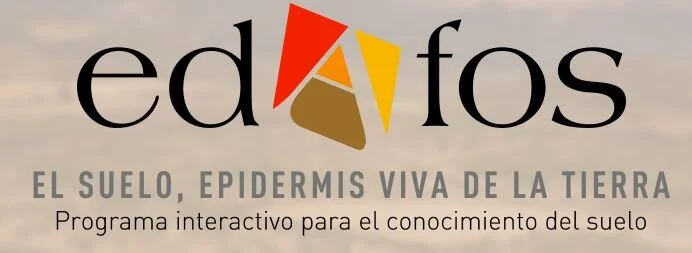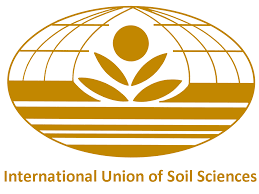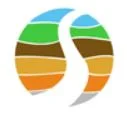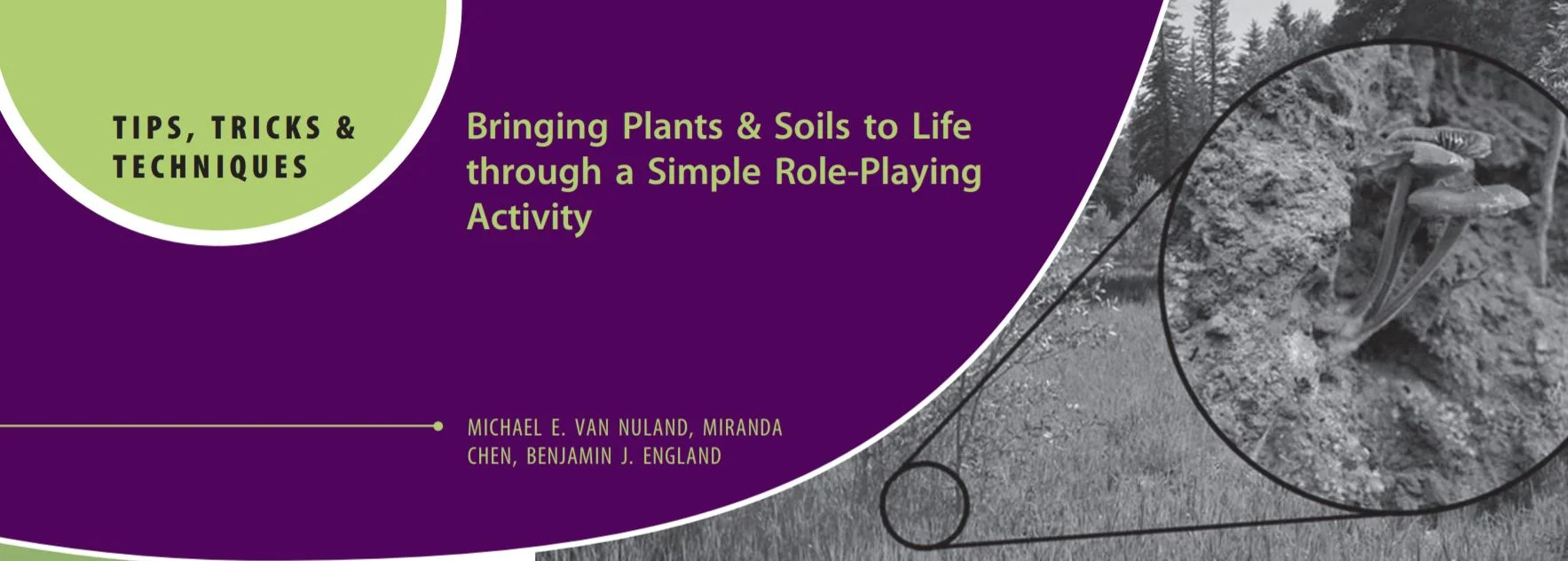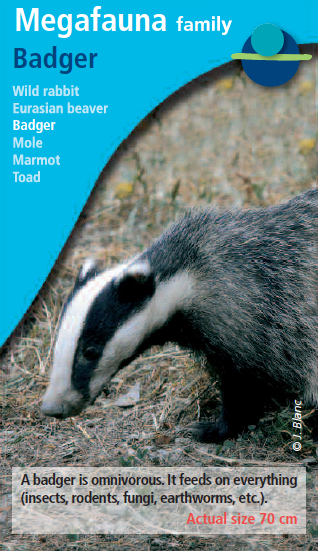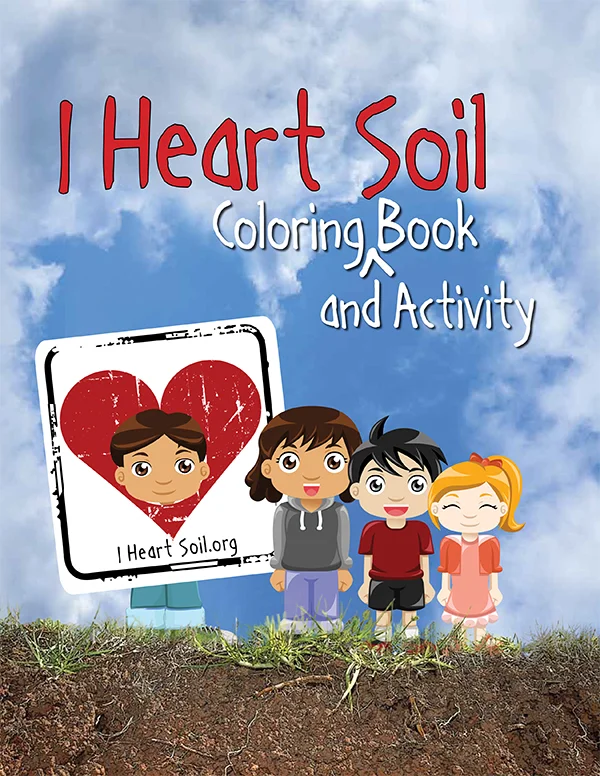Educational Resources
The GSBI has collated Educational Videos that others have produced on our Educational Videos page.
The EDAFOS program is an interactive, multiplatform program that allows you to acquire knowledge about Soil Science and practice with self-evaluating exercises and activities. This online, self-learning tool is available in Spanish and in English and reviews the components, the soil formation factors and processes and the ecosystem services of the soils.
The Food and Agriculture Organization of the United Nations and the International Union of Soil Sciences have put together a new collection of children’s stories from around the world. This exciting new resource is available online on the FAO website.
The International Union of Soil Sciences, the Food and Agriculture Organization of the UN, and the Global Soil Partnership held a children’s book competition in conjunction with the 2020 World Soil Day. Downloads of the winners books are available online.
A resource of articles written for youth on soil biodiversity from researchers currently working in the field.
Resources for Kids of All Ages from Soil-net
Soil-net.com has resources for kids of all ages. These fun activities are broken down by grade level. There are also case studies and ideas for teachers and parents.
Soil Science Resources the IUSS
The International Union of Soil Sciences has several songs, videos, poems, activities, and books that are great for teaching kids about the wonders of soil sciences! Some of the resources are available in both English and Spanish.
Children Learning About Conservation of Nature and Soil Biodiversity
Check out this webpage for links on different kinds of nature conservation
Bringing Plants & Soils to Life through a Simple Role-Playing Activity
Michael Van Nuland, Miranda Chen, and Benjamin England published a new article in The American Biology Teacher that could be useful for engaging students in active learning to help with plant and soil biology concepts.
From George Brown, EMBRAPA Forestry
A fun and informative PowerPoint about earthworms. The slides feature vibrant pictures to demonstrate concepts.
Soil Biodiversity Bingo
From Kristina Runde, Science Teacher, Fort Collins High School, Colorado, USA
Students work in groups examining a soil sample with a microscope, marking out their finds on bingo cards.
Soil Fauna Playing Cards
An educational card game for children of all ages. The game emphasizes the soil trophic network with colorful photos and descriptions on the hidden life of soil with 7 happy families.
English version
French version
portuguese version — available on request from Dr. Paulo Sousa (Email: jps@zoo.uc.pt)
Worm Week Trading Cards
From National Public Radio (USA)
Trading cards featuring worms discussed on National Public Radio's Worm Week (2016). Explore more and download a pdf here.
I Heart Soil Coloring and Activity Book
by the Soil Science Society of America
For the younger set, an IYS Coloring and Activity Book has been developed, based on the monthly themes. Each month’s activity has a coloring page and an accompanying activity – a word search, connect the dots, crosswords, and more. It’s a fun way to introduce the topic of soils to kids at the K-2 grade level. The full book (or individual pages) are available for download, at no charge. All pages should be credited to the Soil Science Society of America.
Curumim and Cunhanta: Helping Soil Biodiversity
The children’s book raises the awareness and furthers the knowledge and understanding of soil biodiversity in Brazil. Integrating indigenous language with a fictional story, the book relates true facts about soil biodiversity. The book also emphasizes how conservation of soil biodiversity depends on all of us. The greater applicability of the book, cute pictures, and understandable language makes the book an important resource for all.
The Global Learning and Observations to Benefit the Environment (GLOBE) program is a worldwide hands-on, primary and secondary school-based science and education program. GLOBE's vision promotes and supports students, teachers and scientists to collaborate on inquiry-based investigations of the environment and the Earth system working in close partnership with NASA, NOAA and NSF Earth System Science Projects (ESSP's) in study and research about the dynamics of Earth's environment.
Our overall mission is to advocate for and enable increased education of all people about soil biodiversity. To support this goal, the group will:
Articulate a vision for using soil organisms to achieve diverse educational goals
Collect soil biodiversity educational resources (for all levels and contexts: K-12, higher ed., informal, outdoor, etc.) to create a clearing house on the GSBI website
Foster collaboration on the development of new soil biodiversity educational resources
Review and summarize contemporary pedagogical research, theories and approaches that can inform effective teaching about soil biodiversity
Engage teachers to identify their perspectives about and needs for integrating soil biodiversity into their curricula and lessons
The seeds of this education group were first planted at the First Global Soil Biodiversity Conference in Dijon, France in December 2014. For this meeting, Dr. Loren Byrne (Roger Williams University, USA) organized a soil ecology education session that included 11 presentations about soil biodiversity education efforts from around the world (listed below). The session included diverse ways that soil biologists can engage people to learn about soil organisms: from simple hands-on demonstrations to field work, from card games to children’s stories and songs.
In addition, preliminary reviews of the scientific literature have revealed wonderful ideas about how educators can engage students with pedagogy that focuses on soil biodiversity. Some of these articles are listed below but surely there is more available that needs to be compiled in one place.
Soil Education Publications
Oliveira, S.S., Pereira, J., Santos, P. and Pereira, R., 2021. Assessing Soil Quality in Schoolyards: A Hands-On Activity for Middle School Students. The American Biology Teacher, 83: 331-336. pdf available here
Appel, C., Vaughan, K., Swan, B., Wallace, M., Stubler, C. and Verma, P., 2014. Effect of a soil microbial activity laboratory on student learning. NACTA Journal 58: 129-134. access article here
Byrne, L. B., R.K. Thiet, and V. B. Chaudhary. 2016. Pedagogy for the Pedosphere. Frontiers in Ecology & Environment 14: 238-240. pdf available here
Andrews, S. E., S.D. Frey. 2015. Studio Structure Improves Student Performance in an Undergraduate Introductory Soil Science Course. Natural Sciences Education 44: 60-68.
Bruns, Mary Anne, Loren Byrne. 2004. Scale model of a soil aggregate and associated organisms: A teaching tool for soil ecology. Journal of Natural Resources and Life Science Education 33: 85-91. pdf available here
Byrne, Loren. 2013. An in-class role-playing activity to foster discussion and deeper understanding of biodiversity and ecological webs. EcoEd Digital Library. pdf available here
Hoyt, Catherine, Matthew Wallenstein. 2011. Soil Respiration and Student Inquiry: A Perfect Match. Science Activities 48: 119-128.
Johnson, E. A., K. M. Catley. 2009. Urban soil ecology as a focal point for environmental education. Urban Ecosystems 12: 79-93.
Krzic, M., A. A. Bomke, M. Sylvestre, S.J. Brown. 2015. Teaching Sustainable Soil Management: A Framework for Using Problem-Based Learning. Natural Sciences Education 44: 43-50.
Magee, Paula A., Elisha Wingate. 2014. Using Inquiry to Learn about Soil: A Fourth Grade Experience. Science Activities 51: 89-100.
Phillips, Marianne, Julie Vowell. 2013. Soil, Seeds, and the Pumpkin Patch! Science Activities: 50: 54-61.a
Stoeber, Rodelyn, Fernand Saurette, Daniele Dubois-Jacques, Deny Gravel. 2010. The use of the microcomposter to study the dynamics of a mini-ecosystem. Science Activities 47: 15-21.


